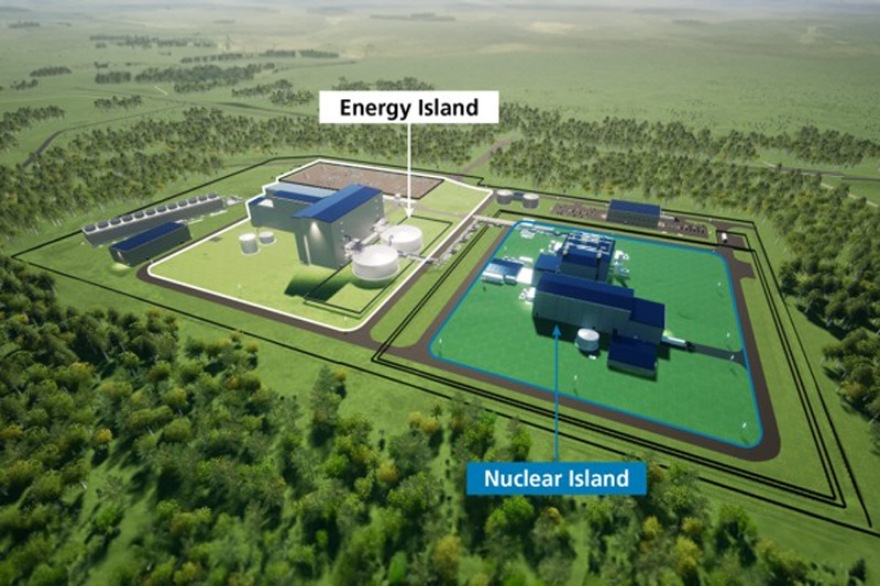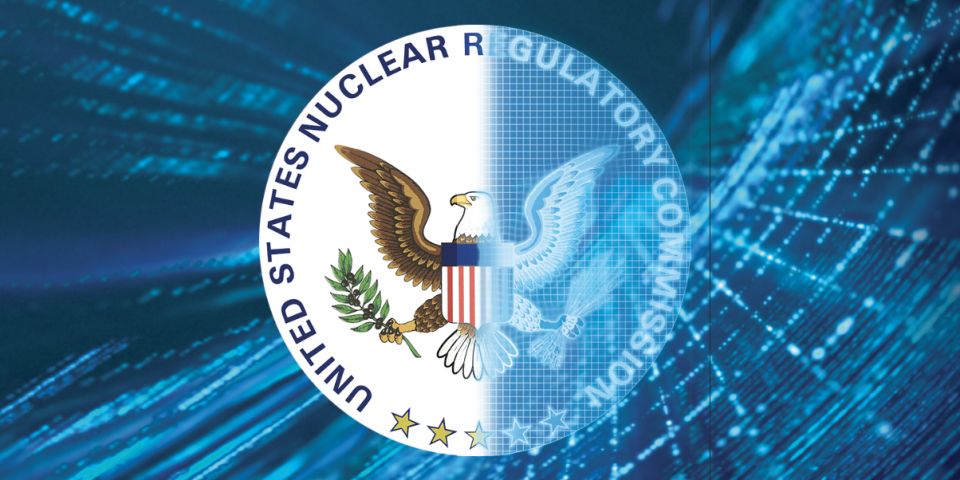Nuclear Power Uprates: What, how, when, and will there be more?
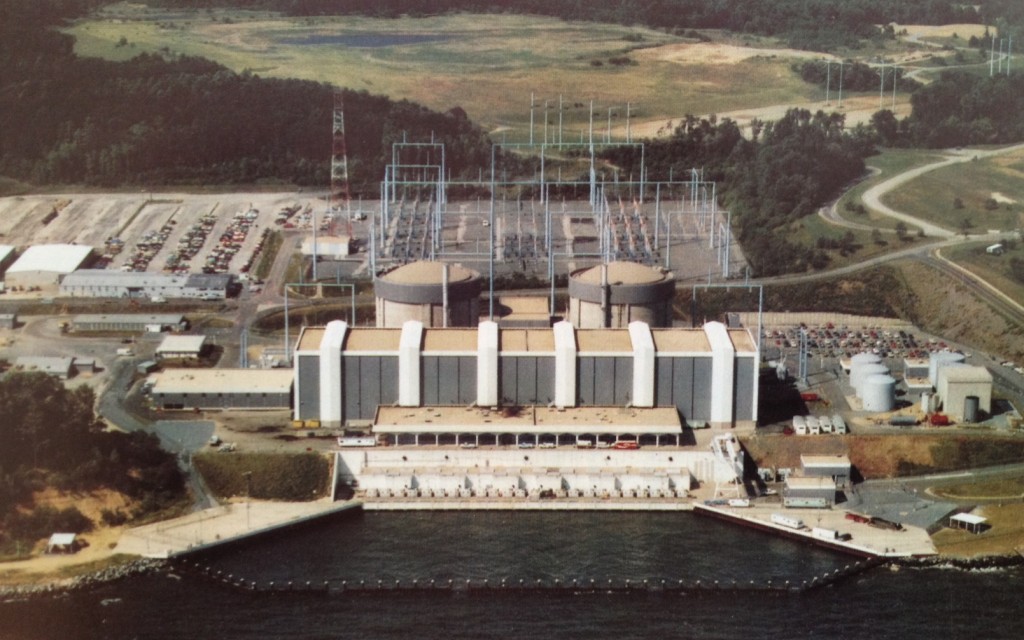
Calvert Cliffs Plant; two unit nuclear generating station. Baltimore Gas and Electric Company brochure, October 1980.
I received an email this morning (in the midst of my daily avalanche of promotional emails) with a link to a brief story about uprating of nuclear plants worldwide (in other words, increasing the power output of an already-built plant)-what had been done, how many were planned, and so forth. I wondered to myself just how many nuclear plants in the United States had been uprated, and when they started-and given the recent hullabaloo over the recent U.S. Environmental Protection Agency CO2 emission policy, it seems like (in addition to discussing small modular reactors) we might also want to toss the uprate card back on the table. Instead of flat or only slightly rising demand for electricity, we may face a steady lowering of generating capacity as plants that are high CO2 emitters (and thus violators) get shut down. Sure, renewables will play a part, and so will increased efficiency, but having more power is better than having less, or too little. I found no quick and easy reference for the kind of analysis I wanted, so I took a little time and did it myself.
Uprate? You can do that? How?
 Yes, uprates can be done-and it's been happening for a long time. In nuclear power we talk about three kinds of uprates, or increases in power outputs, for the power plants. Very briefly, these are as follows, in increasing order of the amount of power gained:
Yes, uprates can be done-and it's been happening for a long time. In nuclear power we talk about three kinds of uprates, or increases in power outputs, for the power plants. Very briefly, these are as follows, in increasing order of the amount of power gained:
- MUR or "Measurement Uncertainty Recapture": Think about this as saying that we're going to put more accurate instruments into a plant, and thus will be able to develop a very slightly (maybe 1 percent or so) higher power now that we're more certain of the exact parameters. Originally, it turns out, the instruments built for nuclear plants years back were quite accurate-so that these types of uprates are typically small. For all you "car nuts" out there, think "police speedometer." (Do they even sell "police package" cars any more? My father had a Caprice LTZ... but I digress.)
- "Stretch": This uprate uses the installed equipment to a higher degree of its maximum capability. These are a few to several percent power increases.
- "Extended Power Uprate": This is the "biggie." This is a major job, including replacement and upgrading of the turbine generator, perhaps other plant systems too such as pumps; it's a major investment and involves a lot of complicated and heavy work. The payoff, though, is that the return on the investment is earlier, and thus the profit comes earlier, than building any kind of new power plant.
Now, the nuclear industry has for some years, in a dearth of construction of new plants, been pointing out that, "Yes, while we're not building new plants, we've had lots and lots of uprates of existing plants-so that we've added capacity equal to a number of completely new nuclear plants."
That's exactly correct. Over the years since uprates began (in the present sense-more on that later) U.S. nuclear plants have added 6908 MWe of generating capacity (a figure I got by adding up NEI's graphical figures found here.) If we think about that in terms of the nuclear plants being built brand new today, which are nominally 1000-MWe plants, that's almost seven new nuclear plants' worth of power-but at a fraction of the overall cost, because no new siting or major construction was required.
Uprating isn't new
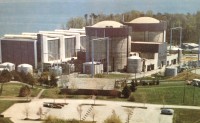 The first uprate as we now know them was performed at Calvert Cliffs (photo seen at the top of this article and here at left), and actually occurred right after the plant was completed. Originally these two Combustion Engineering pressurized water reactors were rated at 2560 MWt/810 MWe for Unit 1 and 2560 MWt/825 MWe for Unit 2; the units entered commercial operation May 8, 1975, and April 1, 1977, respectively. In 1976, before the second unit came on line, Baltimore Gas and Electric had applied to the Nuclear Regulatory Commission to increase the ratings of both units to 2700 MWt as a "stretch uprate," which was permitted (after careful analysis) in 1977.
The first uprate as we now know them was performed at Calvert Cliffs (photo seen at the top of this article and here at left), and actually occurred right after the plant was completed. Originally these two Combustion Engineering pressurized water reactors were rated at 2560 MWt/810 MWe for Unit 1 and 2560 MWt/825 MWe for Unit 2; the units entered commercial operation May 8, 1975, and April 1, 1977, respectively. In 1976, before the second unit came on line, Baltimore Gas and Electric had applied to the Nuclear Regulatory Commission to increase the ratings of both units to 2700 MWt as a "stretch uprate," which was permitted (after careful analysis) in 1977.
This began a long period of what were mainly stretch uprates; the first extended uprates in the late 1990s did not exceed in percent power some of the stretch uprates of earlier years. Large uprates began after the turn of the century with some as high as 15 percent to 20 percent.
I mentioned that there was a "present sense" of uprates-which began in 1977. There was a time during the early years of operation of nuclear plants that provisional licenses at lower-than-designed power ratings were issued. Plants "tested out" at these provisional ratings, then later were re-licensed to increase power to the full designed level. One of my previous articles for the ANS Nuclear Cafe, describing Pathfinder Atomic Power Plant, mentioned (for the first time anywhere) that the plant originally tested at a provisional power rating, as one example. This was occurring in the 1960s.
So the natural question-really an aside, but worth asking-is this: "What was the first uprate?" My answer has to be N.S. Savannah, 1964. The ship was originally given an operational limit of 69 MWt, so that the original actual core thermal limit of 74 MWt would not be exceeded. It was found very early in her operation that this was not enough power to allow for full propulsion capability (not just her rated continuous 20,000 shaft horse power/SHP but her overload of 22,000 SHP) and full hotel loads. Babcock & Wilcox performed extensive analysis to allow raising the core operational limit to 80 MWt, which was done when the ship returned to service with American Export Isbrandtsen Lines. Some equipment modification was performed concurrently, but no major modifications were required-thus, this would have been a "stretch" uprate.
What now?
I was quite surprised, looking at the tables of nuclear plants, to see that there was really no tabulation of how many had received uprates-so I printed a list and laboriously marked off all the uprates at still-operating plants. Here are my totals by NRC regions.
In Region I, 7 of 26 total reactors have received extended power uprates; 17 have had stretch uprates and 16 have had MUR uprates. (Yes, some have had one, two, or all three at one reactor over the years.) Wow, I thought, that leaves a lot of uprating, even if only potentially likely.
In Region 2, 8 of 32 have received extended power uprates, 22 have received stretch uprates, and 15 have had MURs.
In Region 3, 9 of 23 have received extended power uprates, 9 have received stretch uprates, and 8 have had MURs.
In Region 4, 3 of 19 have received extended power uprates, 11 have received stretch uprates, and 8 have had MURs.
Looking at these figures, there's a LOT of capacity theoretically left in U.S. nuclear plants in terms of uprates-even though they've dropped off in recent times. Only 27 of 100 US reactors have received extended uprates. Way back in 2003, the last time everyone was all agog over nuclear plants because of lowering carbon limits, the Nuclear Energy Institute predicted that U.S. nuclear plants could theoretically add over 10,000 MWe without building any new plants-and of that, about 6500-8500 MWe could come from uprates. (That's on top of the 6908 MWe already added since 1977 by uprates, by the way.) Considering the totals we've just seen as to how many plants have not had the largest type of uprate, and seeing how many could still receive stretch uprates, that figure might roughly hold.
(Note: Yes, I'm aware that some plants included in the total uprates since 1977 have shut down and, yes, I'm aware that not every nuclear plant in the United States is in a location where uprating makes economic sense. Or hasn't until now.)
I think that as we enter into discussions about the EPA regulations, carbon emissions, and nuclear energy, we should talk about nuclear plants in multiple senses-yes, adding small modular reactors into the mix makes good sense and,,yes, completing selected unfinished nuclear plants makes good sense in other spots. But now, we might wish to inject uprating more nuclear plants into the mix; perhaps we might see some reconsideration beyond the very few current plans for uprates (the NRC expects ZERO extended or stretch uprate applications from now through at least 2017), depending on how the carbon limits, and penalties, play out.
_________________
Note: Uprates for other reactors have been applied for and are in process; Peach Bottom-2 and -3 have extended power uprates planned by the NRC for final approval in September of this year; the only other extended power uprates, for Browns Ferry-1, -2, and -3 are however all on hold. Similarly, MURs for Oconee-1, -2, and -3 are all on hold, and in the last two years a number of planned uprate projects have been cancelled or deferred, such as at Limerick and La Salle.
Further note, just for "nukes": Yes, for all you sharp-eyed older folks out there, those are indeed Westinghouse KX-24 Hi-Shock meters you saw above, for the power range NIs on SAVANNAH. Her control panel is a mix of these, GE DB40 meters, and Bailey vertical or edge type meters.
___________________
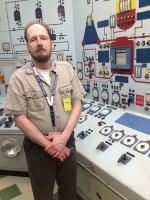 Will Davis is the Communications Director for the N/S Savannah Association, Inc. where he also serves as historian and as a member of the board of directors. Davis has recently been engaged by the Global America Business Institute as a consultant. He is also a consultant to, and writer for, the American Nuclear Society; an active ANS member, he is serving on the ANS Communications Committee 2013-2016. In addition, he is a contributing author for Fuel Cycle Week, and writes his own popular blog Atomic Power Review. Davis is a former US Navy reactor operator, qualified on S8G and S5W plants.
Will Davis is the Communications Director for the N/S Savannah Association, Inc. where he also serves as historian and as a member of the board of directors. Davis has recently been engaged by the Global America Business Institute as a consultant. He is also a consultant to, and writer for, the American Nuclear Society; an active ANS member, he is serving on the ANS Communications Committee 2013-2016. In addition, he is a contributing author for Fuel Cycle Week, and writes his own popular blog Atomic Power Review. Davis is a former US Navy reactor operator, qualified on S8G and S5W plants.



